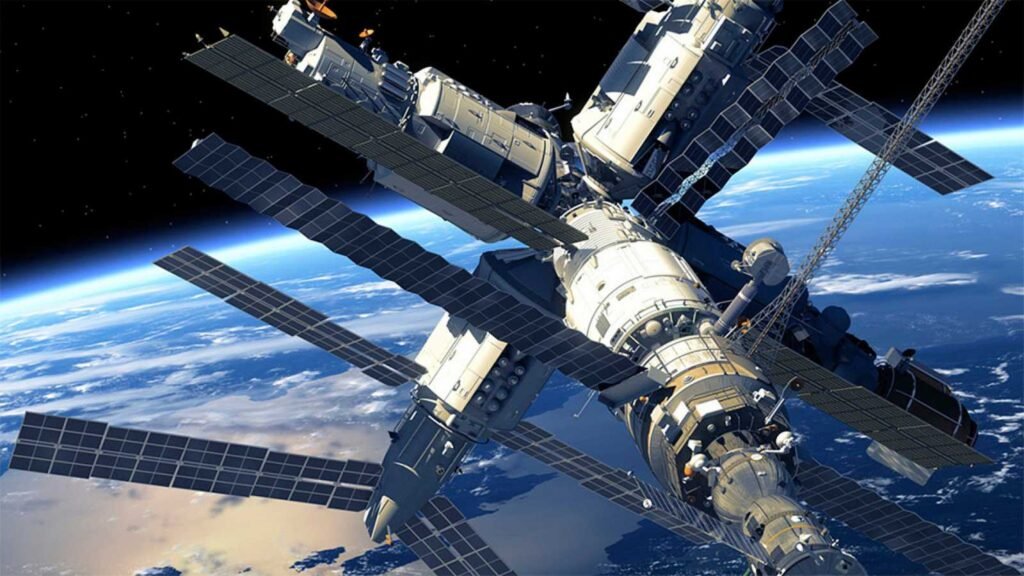Maj. Gen. Gregory Gagnon, U.S. Space Force Deputy Chief of Space Operations for Intelligence, at the Mitchell Institute for Aerospace Studies’ Third Annual Space Security Forum March 27, 2024, at the Army Club and the Navy in Arlington, VA. Photo by Mike Tsukamoto/Air and Space Forces Association.
The PRC’s rapid military advance in space means that the People’s Liberation Army no longer only threatens US assets in orbit, but now has space-based targeting and detection capabilities to enhance the capabilities of its joint forces to threaten the United States on Earth, Space Force leaders warned on March 27.

Chief of Space Operations Gen. B. Chance Saltzman highlighted the risks in a keynote address at the Mitchell Institute for Aerospace Studies’ Space Security Forum in Arlington, Virginia, where he presented a four-quadrant chart illustrating the competition between US “blue” space capability and China’s “red” space capability:
At the top left, American forces dominate, Saltzman said: “This is where we live for a significant period of time. It’s where we want to be, maintaining space superiority.”
In the lower left, neither part is effective in space. In that scenario, Saltzman said, China has the advantage, because the U.S. joint force is so dependent on space.
At bottom right, China achieves spatial superiority over the US, the worst possible outcome for the US.
At the top right. This signals “a space domain where both Blue and Red can use space capabilities however they wish, and I would also argue that this again favors the PRC, due to the Western Pacific location,” Saltzman noted.

“Anything other than the top left is a very high risk to the joint force and our ability to project power,” Saltzman warned. And right now, “I think we’re in the upper right quadrant.”
Both Russia and China have demonstrated the ability to attack satellites with kinetic and non-kinetic means. But Saltzman and Deputy Chief of Space Operations for Intelligence Maj. Gen. Gregory J. Gagnon said China has moved beyond simply countering U.S. advantages in space.
“It’s not commonly understood, but since the Chinese People’s Liberation Army Strategic Support Force was established in December 2015, they have increased their assets in orbit by 500 percent,” Gagnon said. “It is not commonly understood that in recent years they have placed more than 200 satellites into orbit each year. And more than half of those satellites are detection satellites, designed to monitor US, Japanese, Australian forces that are operating in the Pacific Western … So not only the threats in space, but the threat from space have profoundly changed.”
Saltzman said China’s growing fleet of intelligence, surveillance and reconnaissance satellites is enabling its “strike networks,” just as the Pentagon is trying to interconnect its sensors and launchers through Joint All-Domain Command and Control (JADC2). .
“It has become increasingly clear over the last decade that the Russians and the PRC are coupling space-based ISR with satellite-assisted precision guided munitions that can receive updated guidance from SATCOM,” Saltzman said. “Specifically, the PRC has more than 470 ISR satellites that feed a robust sensor and launcher attack network. … This new sensor and launcher attack network creates an unacceptable risk to our force deployed abroad. This is something which most of us are just not used to thinking about.”
Kelly D. Hammett, director of the Rapid Space Capabilities Office, noted that while the U.S. private sector has increased the frequency of launches and the number of civilian-owned and operated satellites in orbit, the government is still is in the early stages of its long-term program to build a proliferated military architecture. That contrasts with the work China has been doing.

“We have a lot going on,” Hammett said. “We’re building new capabilities, trying new things, trying to get assets into range so that operators can test and train against them. It’s not the overall force structure that we’ll need to be able to compete and deter and potentially fight and win against the vast array of assets that the Chinese are putting into orbit. There are 400 ISR satellites, they are launching 100 satellites a year, and most of them are very insidious. More than half of them are space warfare satellites. commercial”.
Saltzman says the US must counter that threat through “responsible space campaigns,” with weapons and methods that put Chinese satellites at risk while avoiding destructive acts that would create orbital debris and foul the domain.
What that means is not yet completely clear. Retired General Kevin Chilton, President of the Mitchell Institute for Space Power Center of Excellence, engaged Assistant Secretary of Defense for Space Policy John F. Plumb on the topic of balancing offensive and defensive capabilities in space.
News of Instagram
